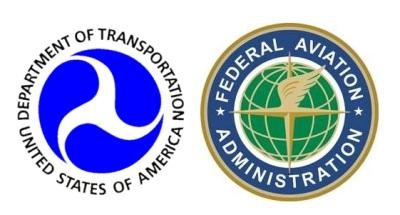Final Report Issued Last Week Concerning Risk-Based Oversight
On May 1, 2013, the DOT Inspector General issued its final report on the FAA's risk-based oversight of aircraft repair stations. Currently, FAA is responsible for overseeing nearly 4,800 repair stations used worldwide by U.S air carriers. The IG found that while FAA developed a risk assessment process to aid repair station inspectors in identifying areas of greatest concern, its oversight continues to emphasize completing mandatory inspections instead of targeting resources where they are needed based on risk.

At the request of former House Transportation Committee Chair John Mica (R-FL), the DOT IG's office evaluated the Agency’s progress since its last review. Specifically, the office determined whether FAA’s oversight includes accurate and timely risk assessments of repair stations, and evaluated the effectiveness of FAA’s oversight of foreign and domestic repair stations. According to the report, the FAA developed a risk assessment process to aid repair station inspectors in identifying areas of greatest concern. Despite the agency's efforts, its oversight emphasizes completing mandatory inspections instead of targeting resources to where they are needed based on risk. Of the 16 established repair station inspection areas, FAA guidance only requires 7 to be assessed for risk; the other 9 are inspected annually regardless of risk. Additionally, FAA inspectors do not use this system at foreign repair stations. Instead, they review all inspection elements annually at these facilities.
Further, FAA’s risk assessment tool was designed to only include the prior year’s inspection data. As a result, inspectors cannot conduct trend analysis due to insufficient historical data. In addition, FAA has not provided inspectors with national-level data analyses that would enhance their ability to assess repair station performance, though these data were promised when the system was implemented 5 years ago. Finally, the FAA provided ineffective training to inspectors on how to use the oversight system tools, further hindering inspectors’ ability to conduct adequate repair station risk assessments. Due to weaknesses in FAA’s oversight system, inspectors
The IG says that the FAA concurred with all nine of its recommendations to enhance the Agency’s oversight of repair stations, citing its plans to implement a new oversight system—the Safety Assurance System (SAS)—in fiscal year 2015, and proposing actions to address our concerns in the interim. However, the Inspector General's office is requesting additional information or alternative actions for three recommendations to ensure adequate oversight until SAS is complete.
The report indicates some inspectors do not use the risk assessment process at all, and those that do are hindered in their ability to assess risk, due in part to the RSAT’s limitations with data availability and quality. While additional training will be helpful, it will not address the fact that FAA guidance requires only seven inspection elements to be assessed for risk while the other nine are inspected annually, regardless of risk. To ensure that the Agency effectively targets its inspection resources by risk, the IG is asking FAA to reconsider its position and implement an interim action that is responsive to its recommendation.
While the IG's office said it recognizes that inspectors can adjust their surveillance plans at any time, such as by increasing or decreasing the number of inspections as a result of changes in risk, they cannot input these changes in the RSAT after it has been prepared at the beginning of each annual inspection cycle. Providing inspectors with additional training will not address the fact that the RSAT, in its current form, does not allow inspectors to track changes in risk in real time at repair stations. Therefore, the IG is asking FAA to reconsider its position and provide interim actions that are responsive to its recommendation.
Finally, the FAA indicated that it expects inspectors to prioritize inspections to those repair stations determined to have increased risk, and it plans to conduct recurrent training to emphasize this requirement. While the IG agrees that training can help reinforce requirements, concerns remain that the FAA still lacks a method for verifying whether inspectors actually meet the requirements. Given the findings that many inspectors do not effectively prioritize their inspections based on risk, the IG's offices says it believes an additional control is necessary to ensure compliance with this important requirement. Therefore, the agency has been asked to reconsider its response and develop a formalized control or another appropriate interim solution.
 ANN's Daily Aero-Linx (05.02.24)
ANN's Daily Aero-Linx (05.02.24) ANN's Daily Aero-Term (05.02.24): Touchdown Zone Lighting
ANN's Daily Aero-Term (05.02.24): Touchdown Zone Lighting Aero-News: Quote of the Day (05.02.24)
Aero-News: Quote of the Day (05.02.24) ANN FAQ: Contributing To Aero-TV
ANN FAQ: Contributing To Aero-TV NTSB Final Report: Cirrus Design Corp SR20
NTSB Final Report: Cirrus Design Corp SR20



